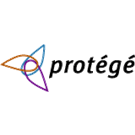Difference between revisions of "Protege"
m |
|||
| Line 23: | Line 23: | ||
The Protege platform supports two main ways of modeling ontologies via the [[Protege-Frames]] and [[Protege-OWL]] editors. Protege ontologies can be exported into a variety of formats including RDF(S), OWL, and XML Schema. | The Protege platform supports two main ways of modeling ontologies via the [[Protege-Frames]] and [[Protege-OWL]] editors. Protege ontologies can be exported into a variety of formats including RDF(S), OWL, and XML Schema. | ||
| − | |||
| − | |||
Protege is based on Java, is extensible, and provides a plug-and-play environment that makes it a flexible base for rapid prototyping and application development. | Protege is based on Java, is extensible, and provides a plug-and-play environment that makes it a flexible base for rapid prototyping and application development. | ||
Revision as of 17:56, August 21, 2007
Protege
Protege is a free, open source ontology editor and knowledge-base framework. It was developed by Stanford Medical Informatics at the Stanford University School of Medicine.
The Protege platform supports two main ways of modeling ontologies via the Protege-Frames and Protege-OWL editors. Protege ontologies can be exported into a variety of formats including RDF(S), OWL, and XML Schema.
Protege is based on Java, is extensible, and provides a plug-and-play environment that makes it a flexible base for rapid prototyping and application development.
Protege is supported by a strong community of developers and academic, government and corporate users, who are using Protege for knowledge solutions in areas as diverse as biomedicine, intelligence gathering, and corporate modeling.
